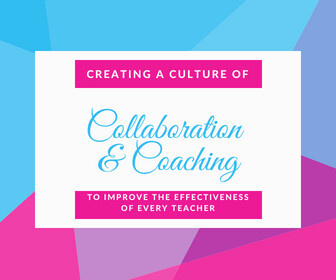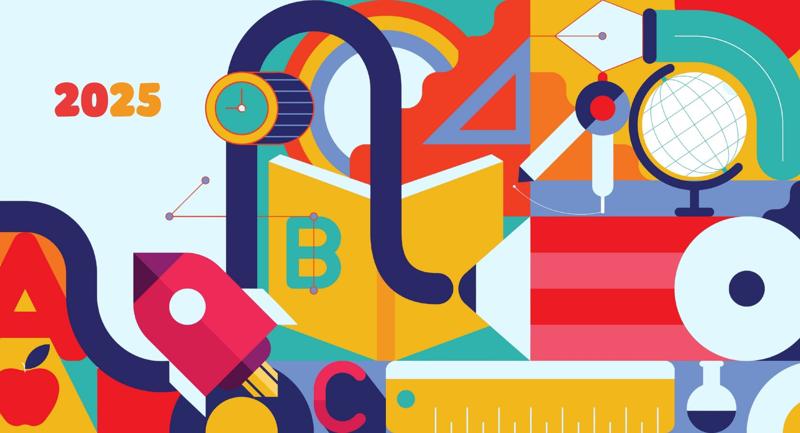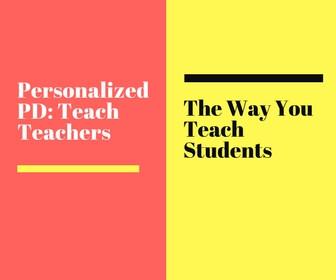Since 2003, Merriam Webster has published the most searched words in their online dictionary. Previous entries have included familiar terms like “democracy,” “blog” and “integrity.” In 2006, however, the most searched isn’t even a real word, but might be one of the most relevant in education today: Truthiness is what people refer to as “truth that comes from the gut,” not books; all the incidental, accidental and even intentional falsehoods that sound just “truthy” enough for us to accept as true.
Truthiness results in people acting upon what they believe, even when it isn’t effective or helpful. As a result, our thinking and actions can be misguided and sidetrack our success. Truthiness is pervasive in education. As a coach who works with teachers all across America, I observe practices and hear conversations that center around a certain “truthiness” regarding what works and what doesn’t work in classrooms and why students may not be successful.
Truthiness can result in a misguided approach that prevents us from doing the things we know work well in schools resulting in the implementation of strategies that are ineffective and less impactful. Essentially we start “chasing unicorns.” When we decide to integrate a certain technology because we hear from another colleague that it yields great results, when we spend time on a project that students “enjoy” but is not rigorous, or when we do things the way we “have always done them,” we chase practices that may not be based in research.
As educators, we know what works in schools because there is plenty of research to guide us. If we follow the roadmap of what research tells us, instead of where our “truthiness” tells us to go, we cease the unicorn chase and actively pursue methods that allow teachers to continuously improve, so all students thrive. We can close the achievement gap and provide equitable, high-quality education in any American city.
Professor John Hattie has given educators such a roadmap to the path of truth. Collective teacher efficacy refers to the “collective self-perception that teachers in a given school make an educational difference to their students over and above the educational impact of their homes and communities” (Tschannen-Moran & Barr, 2004). We know that when teachers embrace empowered mindsets, believe they can impact their students’ achievement and engage daily in the pursuit of finding solutions, students succeed at significant levels.
If collective teacher efficacy is the most effective means of influencing student achievement (Hattie, 2016) based on a meta-analysis by Eells (2011) how do we empower educators to embrace it?
Coaching creates conditions of excellence by increasing collaboration, individualizing support and improving teacher effectiveness faster than traditional professional development (PD) techniques. Coaching gives teachers the opportunity to discuss with a coach how, when and why something doesn’t work. Processing through success and failure is more experiential and effective than trying to retain, recall, practice and implement what someone presented in an in-service the week before (Smith and Smith 2018). When educators support one another in trying new ideas, a culture of collaboration forms and ultimately contributes to improved collective teacher efficacy.
How can principals build this capacity in the name of teacher effectiveness?
- Set the Stage: Although traditional professional development has proven to be a less effective way of improving teacher quality, it has its place. Engage staff in meaningful PD about collective teacher efficacy and why it is important to actively pursue as a school goal. Once they understand the “truth” behind the concept, they are more likely to chase after it and engage others in the pursuit. Such ongoing, strategic development throughout the year should be viewed instead as an opportunity to build upon this foundation.
- Anchor Text: I often coach principals to engage their staff in reading an anchor text that aligns with the vision for their school. Such books challenge mindsets and push teachers to understand how their beliefs shape student success. Have staff unpack a quick excerpt from the book each time they gather for meetings. I suggest books like 10 Mindframes for Visible Learning, Culturally Responsive Teaching, and the Brain, High Expectations Teaching and Closing the Attitude Gap.
- Coach Training: Coaching in your school can be an impactful practice if you select the right people with the right training. A leader in your school may be an effective educator but not necessarily a strong coach. Ensure that coaches receive the proper training, use vetted and consistent protocols, and receive continuous coaching themselves.
- Purposeful Meetings: Design faculty meetings around problems of practice that allow the group to share ideas and solutions with each other. Start a faculty meeting by challenging staff to share something with which they struggle. Some topics may include classroom management, cultural relevancy or instructional pedagogy. Then have small groups discuss these and work together to offer solutions. End this exercise by having a representative from each group synthesize their takeaways to the whole group. This creates regular space for staff to brainstorm, practice asset-based language, collaborate and coach each other throughout the year.
- Leverage Bright Spots: Invite teachers who experience success or growth within a specific area of focus to share what they are doing and why it works with individual teachers, in teams or with the whole staff.
- Elicit Feedback: Before a staff meeting, presentation or coaching session, ask a couple of teachers to observe you and provide feedback. Modeling humility and a growth mindset about receiving coaching will provide a ripple effect throughout the building.
- Find a Movie Star: Ask a teacher to be recorded while teaching and share it with colleagues. When colleagues put themselves out there, ask for and take feedback, it sets the stage for others to be willing to be coached and developed.
- Framed Focus: Have teachers commit to a specific skill or strategy that they want to improve. Frame a poster-sized template that says, “Welcome to my classroom! I am working on __________ and ___________, and I welcome your feedback in those areas.” Have each teacher hang their placard outside the classroom door and invite others to write down their ideas for him or her.
- Peer Observations: Have teachers team up and observe one another’s practices, based on a specific protocol or focus. Train them in giving effective feedback to each other in supportive ways.
The most effective educators are those who constantly work to get better for their students and embody growth mindsets toward improvement. They understand the difference between “truth” versus “truthiness” and as a result, chase after methods and approaches that make a real difference in student achievement. Such practices can be taught and ingrained in the culture of a school with the right conditions. School cultures that have collective teacher efficacy are ones in which teachers engage in reflective practices through collaboration and coaching, and as a result, continuously improve. By creating a culture of collaboration and coaching, teachers can receive differentiated professional development that leads them down the right path . . . away from all those unicorns!
Carrie Lupoli offers a unique perspective as an urban and international educator, administrator, speaker and consultant. Originally from Connecticut, Carrie moved to Asia in 2005, noting the inequities of opportunities for certain students. She founded Live and Learn, the largest organization in Southeast Asia dedicated to effective inclusion services. Carrie joined CT3 in 2014, leading the instructional work.








